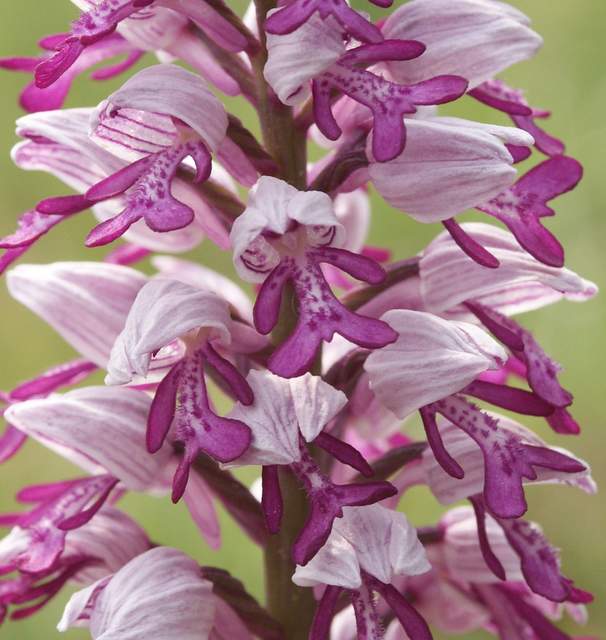Our earth is adorned with millions of beautiful specimens of flora and fauna, the plant group ‘orchids’ is one of them. They have probably been around much before man appeared on earth. Many ancient texts refer to the medicinal qualities of orchids, Theophrastus mentions ‘Orchis’ in his Enquiry Into Plants. Ancient Indian and Chinese text also have references to medicinal qualities of orchids. These plants have evolved and adapted to changing times as well as to different habitats. Apart from regions having extreme weather conditions like the Polar Regions, the desert areas and the aquatic habitats, orchids are found growing all over the world. They, however, grow in abundance in the tropics.
The congenial conditions of high humidity and temperature in the tropics support a vast diversity and huge population of orchids. Though, a large number of orchid species have been discovered from these regions, many may still be hidden in the womb of the equatorial forests. Sadly, many regions with rich orchid growth are being exploited for a variety of reasons, leaving behind denuded areas. Resultant loss of orchid population is irreplaceable, unless strong and early measures are taken.
Fortunately, many countries have taken up conservational measures such as preserving the germplasm and undertaking in-situ as well as ex-situ propagation programs. Many growers, researchers as well as hobbyists have started producing orchid hybrids, thousands of which have already been registered. Production of hybrids has been a boon for orchids commercially, with both cut flowers as well as whole plants selling from about $1 (in countries like India) to $55 (in the international market).
Orchids have gained huge popularity in the cut flower market because of the long shelf life of the flowers, some last for a week to about one month. Their uniquely shaped colourful flowers make them a good choice as houseplants. In countries like India, several projects are underway to encourage housewives to grow and sell these plants to supplement the household income. Apart from being commercially useful, many orchids also possess medicinal properties, which local people have been exploiting since centuries.
Growing orchids is not a tough cookie as thought by many. To grow them successfully, information regarding that plant’s natural growing habit should be available. The grower must know whether the plant is a terrestrial (growing on the ground), an epiphyte (growing on the trees) or a saprophyte (growing on decaying matter). This will decide the requirements of that plant. For propagation purpose, a grower should know whether the plant is a monopodial (having single growing point, e.g. Aerides species) or sympodial (having multiple growing points, e.g. Dendriobiums, Cattleyas).
Equipped with this basic knowledge, growing orchids should not be difficult, especially with the hardy species which require low maintenance. It would be better for the beginners to start with the hardy orchids first and then move on to more delicate only!
Other plants will no longer appear attractive, once caught on orchids. Such is their beauty that they almost become addictive. Orchids can be used in multiple ways, as ornamentals, for medicinal purpose, for commercial use. It is the ingenuity of the grower how to best use them!
 Orchis militaris.
Photography credit: BerndH
Orchis militaris.
Photography credit: BerndH
Orchids - A Brief Introduction
Beginnersby Anu Dharmani
Originally published in BellaOnline
Posted by Sys Admin about 9 years ago.This article references Orchis. militaris.
Article Blog Article Index
Share on Social Media:
New Topics
- David George asked question Odom's Fascination - an unusual orchid in category General Discussion
- Carol Holdren asked question Grow Tent in the Garage in category General Discussion
- David George asked question rlc Caotan Beauty found at Home Depot in category Cattleya Alliance
- Kristin Dorris asked question Odontocidium Orchid fungus? in category General Discussion
- Maria Fernandez asked question Wild. Lisa Devos in category Dendrobiums
New Comments
- Carol Holdren commented on topic "rlc Caotan Beauty found at Home Depot " by David George
- Carol Holdren commented on topic "Odom's Fascination - an unusual orchid" by David George
- Dr. Florian Wolf commented on topic "Wild. Lisa Devos" by Maria Fernandez
- Michael Valcarcel commented on member plant Rlc. Chief Takanaka by Walceli Muniz Valverde
- Michael Valcarcel commented on member plant Rlc. Montana Spirit by Michael Valcarcel
- Michael Valcarcel commented on member plant Ctt. Blazing Sun by Michael Valcarcel
- Michael Valcarcel commented on member plant Bc. Spotted Clown by Michael Valcarcel
- Maria Skrypnyk commented on member plant Yamadara Redland Sunset by Maria Skrypnyk
- André Pessina commented on topic "Odontocidium Orchid fungus?" by Kristin Dorris
- Linda Hartman commented on topic "Image of a plant please" by Leshya Perkins
- Paul Reavis commented on orchid Milt. Kismet
- Christiaan Viljoen commented on member plant Psh. fragrans by Christiaan Viljoen
- Christiaan Viljoen commented on member plant Z. maculatum by Christiaan Viljoen
- Christiaan Viljoen commented on member plant C. Gaskell-Pumila 'Azure Star' by Christiaan Viljoen
- Robert H. Findlay commented on member plant Rlc. Joy Sokabe var. Volcano Queen by Sally K
- James Lunsford commented on member plant Lc. Sagarik Wax 'African Beauty AMO/AOS x Blc. Cherry Suisse'Kauai' HCC/AOS var. Cattlyea 'Hybrid ' by James Lunsford
- John Varigos commented on orchid Bulb. schwarzii
- Linda Hartman commented on topic "Issue with Blc. Ben O'Neil "Jubilee" by Glenda Ratliff
- Henry Shaw commented on member plant Ons. Catatante 'Los Roble' by Henry Shaw
- Mary Lane commented on member plant Den. Tianmu Canary by Terre Moore